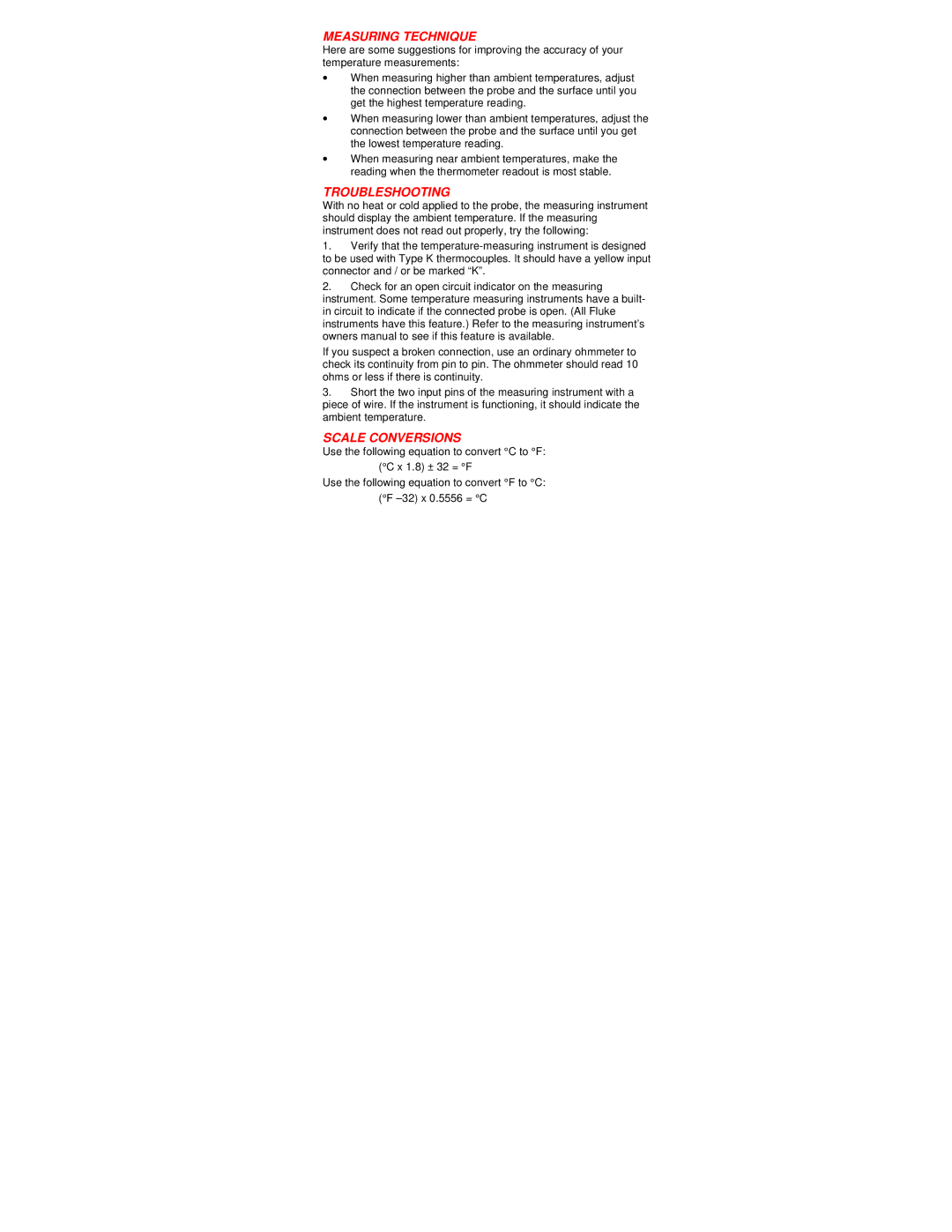MEASURING TECHNIQUE
Here are some suggestions for improving the accuracy of your temperature measurements:
∙When measuring higher than ambient temperatures, adjust the connection between the probe and the surface until you get the highest temperature reading.
∙When measuring lower than ambient temperatures, adjust the connection between the probe and the surface until you get the lowest temperature reading.
∙When measuring near ambient temperatures, make the reading when the thermometer readout is most stable.
TROUBLESHOOTING
With no heat or cold applied to the probe, the measuring instrument should display the ambient temperature. If the measuring instrument does not read out properly, try the following:
1.Verify that the
2.Check for an open circuit indicator on the measuring instrument. Some temperature measuring instruments have a built- in circuit to indicate if the connected probe is open. (All Fluke instruments have this feature.) Refer to the measuring instrument’s owners manual to see if this feature is available.
If you suspect a broken connection, use an ordinary ohmmeter to check its continuity from pin to pin. The ohmmeter should read 10 ohms or less if there is continuity.
3.Short the two input pins of the measuring instrument with a piece of wire. If the instrument is functioning, it should indicate the ambient temperature.
SCALE CONVERSIONS
Use the following equation to convert °C to °F: (°C x 1.8) ± 32 = °F
Use the following equation to convert °F to °C:
(°F
